Many magazines for girls have come and gone over the years, but one of the most endearing had to have been Bunty. Created by prolific publishers D.C. Thomson (famous for many other comics including The Beano and The Dandy and who produce more than 200 million comics each year) it ran from 1958 to 2001, allowing many generations to grow up with its sometimes funny, sometimes serious and sometimes downright peculiar comic strips.
The tales were primarily concerned with issues that were familiar to young girls: i.e. friends, family, school and boyfriends, although as we’ll see in a while, the writers did go on some extreme flights of fancy with others. They were mainly comic strips, three to five pages long and were interspersed with regular magazine features: letters pages, promotions and adverts and previews for the following week. There was also the opportunity to join ‘The Bunty Club’, which gave you the chance to enter exclusive competitions.
The covers were, at the start, drawn depictions of blonde-haired Bunty herself, often engaged in some sort of rosy-cheeked, snowy outdoor pursuit but in the mid-nineties they were brought up-to-date with a photo of what was presumably the publisher’s idea of their typical reader. As an avid Bunty devourer in the early 1980s, however, my favourite part was always the back page: a doll you could cut out and dress in her own paper clothes. Later on this was changed to a poster instead.
As well as the weekly comic, summer and Christmas annuals were also produced, along with the collectible ‘Bunty Libraries’ – small books featuring one complete story. These always had great names: ‘The Strange Changes in Jenny Jones’; ‘Fearless Flo – Stunt Girl’; ‘Galloping Gran’ etc., which invited you to dive in and read more.
The most well-known and the longest-running story in Bunty was ‘The Four Marys’, a comic strip drawn by the artist Barrie Mitchell (who later took on that comic footballing icon, Roy Race – you know, of the Rovers?) that started when the magazine began and ran in it until Bunty packed up her skies/skateboard/ice skates. You’ve probably already had a stab at what ‘The Four Marys’ may have been about, haven’t you? It featured four (you’d figured that one out, I’m sure) teenage female best friends, who were all coincidentally called (yep, you’re one step ahead of me, aren’t you?) Mary.
They attended the girls-only St. Elmo’s boarding school in fictional Elmbury and while the Mary’s first names were the same, the girls’ backgrounds and personalities were supposedly very different. Personally though, I found that because they did absolutely everything together at all times they ended up blending into four clones of the same girl, which meant that I was only ever able to tell them apart by their hairstyles.
Lady Mary Radleigh (known as ‘Raddy’) was obviously from an aristocratic family; her father was an earl. She was well-mannered but never afraid to speak her mind.
From the other end of the status scale was Mary Simpson (or ‘Simpy’ – they didn’t have to reach too far in their imagination for nicknames, did they?); a fantastic maths student, she rose above her working class upbringing by winning a scholarship to St. Elmo’s.
Mary Field (yes, she was obviously called ‘Fieldy’) and Mary Cotter (go on, try this one by yourself….Did you go with Cotty? You’d be right) were both supposedly middle class. Fieldy was a tom-boy, which was 1950’s speak for a girl who was good at sport and Cotty was a shy, gentle and sweet girl, i.e. she had no backbone whatsoever.
The storylines were commonly centred on the day-to-day lives of the four girls at the school; these could be to do with their studies, their teachers or the other girls they shared the space with, although occasionally they strayed into stranger territory and the four Ms (which, if they weren’t, definitely sounds like something they would have called themselves) would be confronted by ghostly figures or other implausible plots.
This was one of the beautiful things about Bunty – the way it could make a complete switch between grittily realistic narratives based on historical facts and absolutely bonkers scenarios based on, well – who knows what the author was thinking? As an example – here are a few stories that featured over the years:
‘The Children’s Champion’ – this was about a Victorian girl called Hester Langley who decided to give up her wealthy London lifestyle to help youngsters in need. (There were a lot of stories set in the Victorian era, mainly emphasising differences between the rich and the poor.)
‘Boyfriend from Blupo’ – decidedly on the ‘fairly mad’ end of the realism scale, this one featured a girl looking for a boyfriend who then finds one, although he is actually an alien. Ok….
Back to serious – ‘Born to Dance’ involved the relationship between aspiring dancer Catherine and her grandmother who forbade her to get involved with ballet in case she replicates the accident that killed her mother.
Then, just for some levity, ‘Lydia and the Little People’ featured a girl enslaved by leprechauns. Well, why not?
One really popular story was ‘Penny’s Place’. Penny was the daughter of café-owning parents and the plots revolved around her life with them and her three close friends. It started life in another magazine entirely, M&J (itself a merger of two of D.C. Thomson’s other publications Mandy and Judy) before transferring to Bunty in 1997 when M&J wound up. Penny’s Place shut up shop at the end of the 90s but readers clamoured for it to come back – and D.C. Thomson obliged by publishing the entire story again from the beginning.
For 43 years Bunty ran weekly but the interests and desires of its young readership were changing and Bunty was feeling decidedly old-fashioned, despite its attempts to modernise. As circulation numbers began to slide it dropped to a monthly publication at the beginning of 2001. Unfortunately this still couldn’t stop the fact that the pre-teens and teen girls of the new millennium were looking for something more contemporary and fresh. Bunty survived for five further months, before folding in June of that same year with a grand total of 2,249 issues under its back catalogue.
Bunty’s influence didn’t just stop with pre-pubescent young ladies though – it found itself being represented in a most unlikely genre in 1979. British punk rock band The Damned sang the song ‘Melody Lee’ which featured lyrics taken from actual text used in Bunty’s story ‘Melody Lee – a dancer she’ll be.’ Written by The Damned member Captain Sensible, he also went on to pen an ode to Raddy, Simpy, Fieldy and Cotty: ‘The Four Marys Go Go Dance All Night At The Groovy Cellar' – something I’m not sure their parents would have been too pleased about.
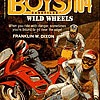
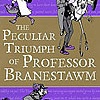
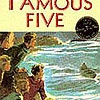


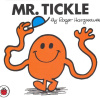



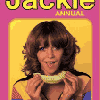
Do You Remember Bunty?
Do You Remember Bunty?